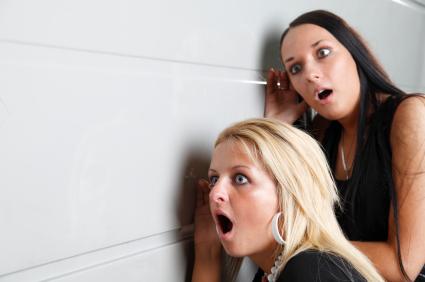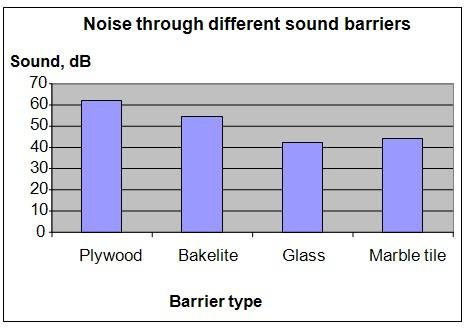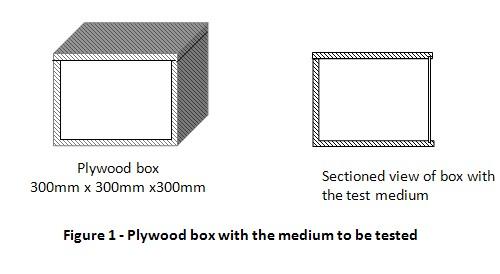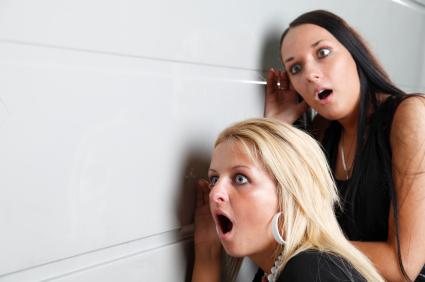| Complexity level: | 9 |
| Project cost ($): | 80 |
| Time required: | 2 days to prepare, 1 hour for the science project experiment |
| Material availability: | Hardware store or home depot |
| Safety concerns: | Handle breakable/heavy materials carefully. Ensure that you wear protective gloves. |
Hypothesis
Higher density materials will transmit less sound. The marble would transmit the least amount of sound.
Overview
Sound transmission
Sound is transmitted more quickly through solids than through liquids and gas. This is because sound consists of kinetic energy that is transmitted from one molecule to another. This transfer of kinetic energy occurs more easily if molecules are closer to one another, as in the case of solids or even liquids, rather than in gases. The transmission of sound also depends on the elasticity and density of the medium.
The elasticity of materials is a measure of to what extent a medium is able to revert to its original form and shape when a force is applied to it and then removed. A highly inelastic medium like steel will be able to transmit sound more effectively than a highly elastic medium like rubber.
Another factor affecting the transmission of sound is density. High density materials will normally have bigger and heavier molecules. Since larger molecules have a heavier mass, they will require more kinetic energy to vibrate and transmit sound. This will make the transmission of sound slower and dampen the sound.
Scientific Terms
Materials
science fair projectThe materials required for this science fair project:
- A decibel meter for measuring noise
- A battery operated siren
- A 300mm x 300mm x 300mm plywood box with slots carved into its side, for us to slide in a 250mm x 250mm board of thickness 5mm on one side only.
- A 250mm x 250mm sheet of plywood of 5mm thickness
- A 250mm x 250mm sheet of bakelite of 5mm thickness
- A 250mm x 250mm sheet of glass of 5mm thickness
- A 250mm x 250mm marble tile of 5mm thickness
- A ruler
Procedure
1. For this science fair project, the independent variable is the type of medium used as a sound barrier. The dependent variable is the noise level outside the box, measured using a decibel meter. The constants (control variables) are the size of the plywood box, the sound source and the distance of the decibel meter from the box.
2. Have a carpenter assemble the plywood box for you. For this science project experiment, the size of 300mm x 300mm x 300mm is proposed but other alternative dimensions may be used. The top cover of the box should be removable, in order to allow you to place the sound source inside the box and to replace the sound barrier on the front side of the box as shown in figure 1 below.
3. The siren is turned on and the noise level is measured using the decibel meter placed 500mm away from the siren. The readings are recorded in the table below.
4. The siren is turned on again and placed inside the box with the plywood medium. The top of the box is covered and the decibel meter placed 500mm from the plywood board to measure the noise level. Record your readings.
5. Procedure 4 is repeated after replacing the plywood board with the bakelite board, glass and marble tile in turn.



Results
The higher density materials (glass and marble) were the most effective at insulating noise and the lowest density material (plywood) was the least effective at insulating noise.
|
Source of sound |
Density (kg/m3) |
Noise level (dB) of siren measured outside the box |
Noise outside box with the siren inside the box |
|
Plywood |
600 |
72 |
62 |
|
Bakelite |
1250 |
72 |
54 |
|
Glass |
2690 |
72 |
42 |
|
Marble tile |
2560 |
72 |
44 |
The chart below represents the results of our science project experiment.

Conclusion
The hypothesis that higher density materials will transmit less sound, is proven to be true. Higher density materials act as very good sound barriers.
Sound barriers are used to protect homes that are located near airports, highway and train lines, from noise pollution. It helps to improve the quality of life for the people who have been affected by these noise pollutions.
Also consider
To improve the reliability and accuracy of our results, a larger sample of participants should be used.
This science fair project may be repeated, this time, comparing different elastic materials like rubber, metal, etc.
Modify the science project experiment, using different sources of sound like a portable CD player.
References
Noise barrier - http://en.wikipedia.org/wiki/Noise_barrier
The speed of sound in other materials - http://www.ndt-ed.org/EducationResources/HighSchool/Sound/speedinmaterials.htm

